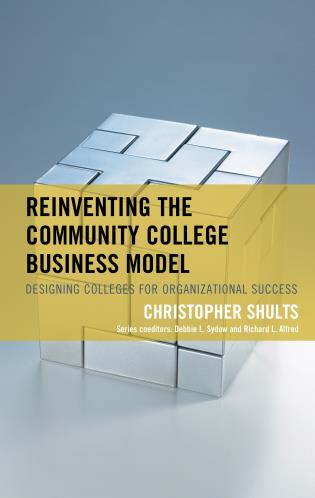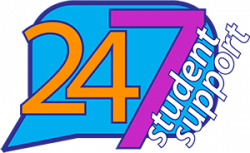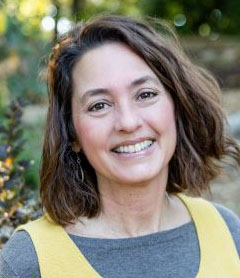I have been struggling with this question for months now, ever since Virginia Western was awarded what Dr. Sandel calls the “holy grail” of community college grants: A Title III Strengthening Institutions Program (SIP) grant, awarded by the U.S. Department of Education.
*Woot woot!*
This is a 5-year grant in the amount of $1.8 million, with the power to impact the *entire* college (hence the program name: Strengthening Institutions). Catch up on the news release here.
The name of our project is Get REAL (Refocus Education on Adult Learners), and Virginia Western is hiring an Activity Coordinator now.
Get REAL’s main goals are to:
(1) Improve College Access (enrollment) for all, especially adult and underrepresented learners.
(2) Improve Academic Success (student outcomes), especially for underrepresented adult learners; and
(3) Begin to track and improve Economic Success (labor market outcomes) for Career and Technical Education (CTE) program graduates (courses intended to lead to immediate employment).
In order to meet these goals, the college will be working with Achieving the Dream (ATD) and the Council for Adult and Experiential Learning (CAEL), which will provide data coaching, professional development, and expertise in the adult-learner space. We are supposed to hear more about both organizations during January in-service.
But this brings me back to my question: What does a successful adult-focused college look like?
Now, our 55-page grant proposal goes into much detail about what the outcomes — the numbers — might look like five years from now, with the familiar emphasis on enrollment, retention, etc. Data will be central to our efforts and transformation.
But I’m challenging myself to think more like a filmmaker: Is it possible to SEE this success? How might we bring this to life? What concrete images or scenarios come to mind when we think about refocusing our efforts to better serve adults?
I have found at least one *real* example so far.

Earlier this year, during one of our “environmental scan” strategic planning meetings, I read a passage from the book, “Reinventing the Community College Business Model” by Christopher Shults.
I had dog-eared and scribbled all over the pages referencing Amarillo College in Texas. This community college is about the same size as Virginia Western (serving just over 10,000 students) in a city similar to the Roanoke MSA (around 200,000).
Amarillo’s core values literally jumped off the page, and I shared them with our colleagues, in what felt like a poetry reading.
Now, before I share their core values, I will remind us of Virginia Western’s:
- Diversity
- Integrity
- Respect
- Success
- Teamwork
And don’t get me wrong — these are good, solid core values. Ones that should inspire our daily work.
But here are Amarillo’s:
- Wow
- Fun
- Innovation
- Family
- Yes
The book explains: “Interactions with faculty and students should lead to a wow moment, celebration and fun are intentional, barriers can be removed through innovative thinking and actions, treating each other as family requires empathy in action, and whenever possible, the answer should be yes.” (110)
These core values were chosen by Amarillo’s students, after a process that involved data summits, focus groups, surveys, and most importantly — “secret shoppers.”
During this process, Amarillo determined poverty, bureaucracy and lack of relational connection and support were the key reasons their students were unsuccessful.
They also learned more about their students, and realized the majority were first-generation, Latinx mothers who worked two jobs and attended school part-time.
So Amarillo asked these students to design the perfect college. What would it look and feel like for them?
Amarillo goes even further, developing a culture of caring which is about “creating an environment of support where students are seen, loved, and cared for until they have the confidence to succeed.” (111)
Amarillo’s president, Dr. Russell Lowery-Hart, intentionally uses the word “love” instead of “service” because love is personal. He explains in this video: “When we talk about systemic or holistic support, those things are important, but it depersonalizes it. It means I can do it without heart. And the students we have today need our heart more than they need anything else.”
And their efforts are working.
As Dr. Lowery-Hart recently noted, Amarillo’s completion rates more than doubled, they have increased enrollment, and they have closed equity gaps in performance and access.
In 2019, Achieving the Dream (ATD) — the organization Virginia Western will begin working with in 2021 — recognized Amarillo with its highest award because of their holistic approach to reducing equity gaps and increasing success for all.
I guess my big takeaway from Amarillo is that employees of the college can’t be the only ones who define success.
And maybe I’m asking the wrong question … maybe it’s not what success looks like. Maybe it’s what experiences with Virginia Western FEEL like?
Our students and potential students — the ones we want to serve better — should take the lead when we talk about the future. What do they need? What do they want? How do we build better relationships? Their voices should be heard.
We’re at a critical moment, when tectonic cultural shifts and college initiatives are converging … the pandemic, America’s racial reckoning, our strategic planning conversations, and this Title III grant.
Perhaps love and caring are exactly what we need to move the college — and our community — forward.
— Stephanie Ogilvie Seagle, December 2020






 Shelley Lyons is glad to be back on campus as she is a Virginia Western alum, and has served as the Administrative Officer for Grants Administration at Virginia Western since early 2022. Prior to VWCC, her career focus was within the Human Services and Arts fields. She wrote her first grant in 1996 on a whim and has continued to plan and learn since that time. She most enjoys seeing a well-planned project come to fruition, where funder, project manager and beneficiaries can all feel success and see impact.
Shelley Lyons is glad to be back on campus as she is a Virginia Western alum, and has served as the Administrative Officer for Grants Administration at Virginia Western since early 2022. Prior to VWCC, her career focus was within the Human Services and Arts fields. She wrote her first grant in 1996 on a whim and has continued to plan and learn since that time. She most enjoys seeing a well-planned project come to fruition, where funder, project manager and beneficiaries can all feel success and see impact.